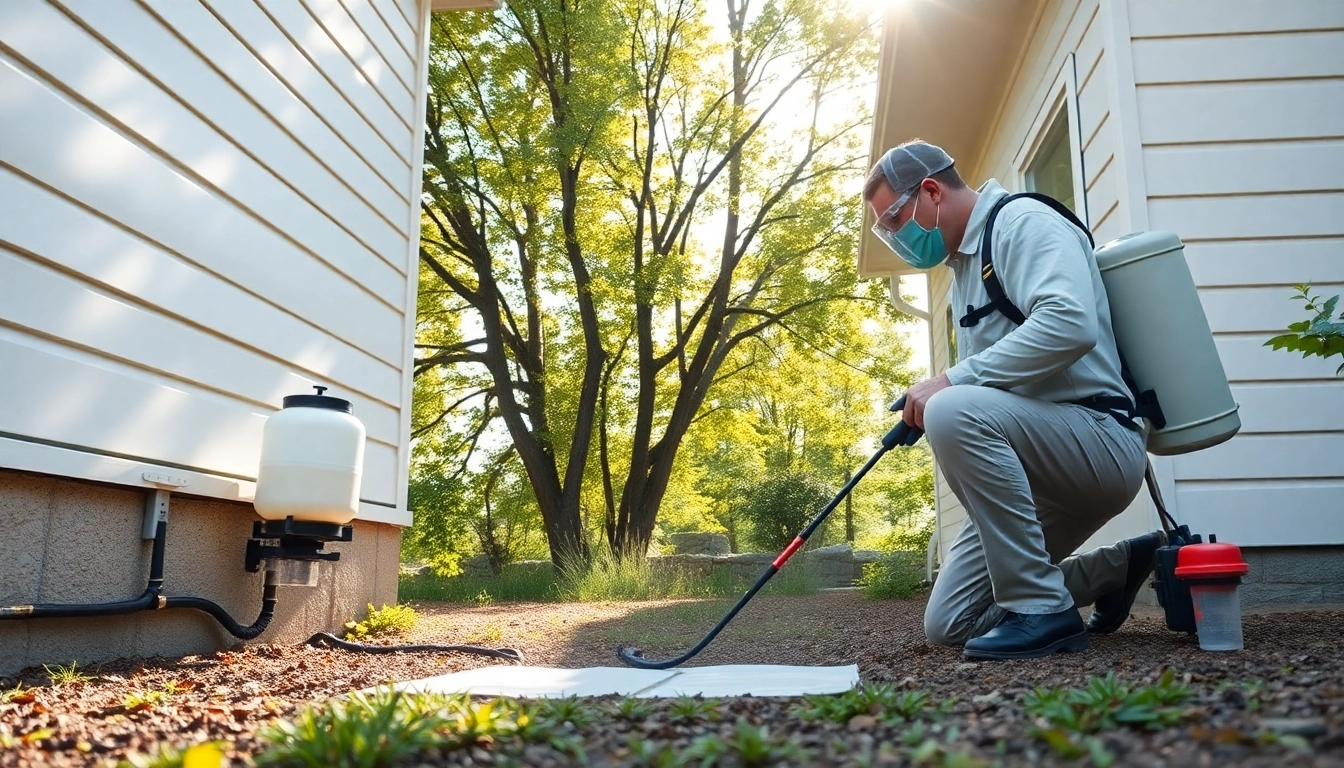Understanding Termite Treatments
Termites are often referred to as the “silent destroyers” because they can chew through wood, flooring, and even wallpaper undetected. The damage they cause is typically significant and costly, leading homeowners to seek effective termite treatments to protect their homes. Understanding the nuances of termite treatment is essential not just for eradication but for prevention too.
What Are Termite Treatments?
Termite treatments are methods employed to remove termite infestations and prevent future attacks. These treatments can be broadly categorized into two types: preventative measures and active treatments. Preventative methods are often applied during construction to create barriers, while active treatment options are used when an infestation has already occurred.
Importance of Timely Intervention
The earlier you can detect and address a termite problem, the less damage will result. Waiting can lead to more severe structural damage and much higher treatment costs. Regular inspections and interventions can significantly lower the risk of an extensive infestation.
Types of Termite Infestations
Understanding the type of termite infestation you’re dealing with is crucial for selecting the right treatment. The three most common types of termites that invade homes include:
- Subterranean Termites: These are the most destructive type, nesting underground and entering homes through mud tubes.
- Drywood Termites: They do not require contact with soil and can infest hardwood furniture and structures, often causing significant damage.
- Dampwood Termites: Generally found in moist, decaying wood, they are less common but can still cause considerable damage if not treated.
Common Methods of Termite Treatments
Liquid Chemical Treatments
Liquid chemical treatments involve applying termiticides directly to the soil surrounding your home. This creates a chemical barrier that prevents termites from entering. These treatments are typically effective for several years, making them a long-term solution. It is crucial to select the right product and follow local guidelines to ensure safety and effectiveness.
Bait Systems for Termite Control
Bait systems are another popular method, designed to attract termites to a bait station filled with a slow-acting insecticide. This method is more environmentally friendly compared to chemical soil treatments because it focuses on eradicating the entire colony rather than just creating a barrier. Bait stations should be monitored regularly and replaced as necessary to ensure they remain effective.
Physical Barriers: Building Defenses
Physical barriers involve the installation of materials that termites cannot penetrate, such as steel mesh and sand barriers, during the construction phase of a building. This method is a preventive strategy that can greatly reduce the likelihood of infestations throughout the lifespan of a property.
DIY vs Professional Termite Treatments
Assessing DIY Options
Many homeowners consider DIY options for termite treatment. These could include termite bait kits, liquid pesticides, and methods like boric acid applications. While DIY treatments can be cost-effective, their success heavily relies on thorough knowledge of termite behavior and accurate application.
When to Hire a Professional
Professional pest control services are recommended in more extensive or severe infestations. Experts have access to advanced treatment options and ensure that the job is conducted safely and effectively. Furthermore, professionals can provide a comprehensive inspection and ongoing treatment plans that DIY methods cannot match.
Cost Comparison of Treatment Methods
Costs for termite treatment can vary widely depending on the method chosen and the severity of the infestation. Typical costs for professional intervention can range from $900 to over $3000. While DIY treatments come at a lower financial burden, they may not be as effective, potentially leading to further expenses down the line.
Preventive Measures Against Termites
Regular Inspections and Maintenance
Regular inspections are a homeowner’s first line of defense against termites. Scheduling annual inspections with a pest control provider can help catch any infestations before they become severe. Inspecting areas prone to termite activity, such as basements and crawlspaces, is particularly vital.
Moisture Control Solutions
Since termites are attracted to moisture, controlling humidity levels in and around your home is crucial. Regularly check for leaks in plumbing, install proper drainage, and consider using dehumidifiers in areas prone to moisture accumulation. This not only protects against termites but also contributes to overall house maintenance.
Landscaping Considerations
Careful landscaping can help prevent termite infestations. Keeping mulch away from foundations, using rocks instead of wood, and planting trees and shrubs at a safe distance from your home can minimize termite attraction. Always ensure wood piles are stored away from the house to reduce the risk of infestation.
Evaluating Treatment Effectiveness
Signs of Successful Treatment
After treatment, it’s important to monitor for signs of success. Look for reduced activity from termites, which can be observed via bait stations or decreased mud tube formations. Another good indication is the absence of new damage in wood structures.
Monitoring for Future Infestations
Even after treatment, vigilance is key. Regular monitoring through visual inspections, checking bait stations and conducting moisture assessments can help identify new infestations before they escalate.
Creating an Ongoing Pest Management Plan
Creating an effective pest management plan involves a combination of methods. Continual inspections, seasonal treatments, and proper home maintenance are paramount for long-term defense against termites. Collaborating with professionals to establish a tailored plan can lead to peace of mind and ensure your home remains protected.
